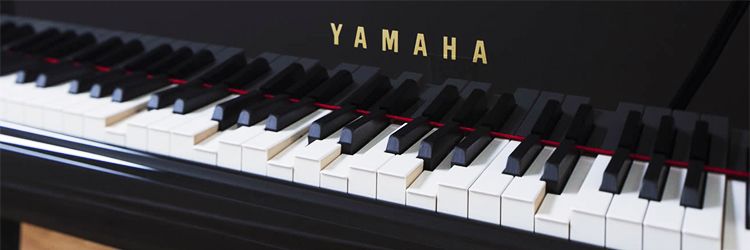MECHANICAL MUSIC REPRODUCTION IN THE MODERN AGE: THE DISKLAVIER.

This week an odd topic: the mechanical reproduction of music - not using a loudspeaker, but via a mechanical movement directly to create acoustic sound waves. For example, by blowing a pipe or triggering a resonating body such as a drum head or a string. Normally, this requires a human to play an instrument: blow a pipe, hit a drum, pluck a string. But if you look up ‘street organ’ on Wikipedia you’ll find ‘barrel organs’ popping up in the 18th century, with operators called ‘organ grinders’. These were often accompanied by a monkey, producing acoustic music by means of mechanical reproduction. At the end of the 19th century, the ‘Pianola’ became a common reproduction method, peaking in popularity in the roaring Twenties. Shortly afterwards the radio and the electrical phonograph put an end to the phenomenon of mechanical music reproduction.
Well... not quite. After Roland, Sequential Circuits and Yamaha boldly adopted MIDI as a music information transport protocol in the early 1980s, engineers at the Yamaha piano factory in Toyooka, Japan, started to investigate if MIDI could be used to offer a high resolution, high quality reproduction method for pianos. What they came up with still staggers me today: the Disklavier.
Mechanically, the Disklavier is exactly the same as a regular piano: mechanical wonders, which are tuned to perfection and brought to life by Yamaha, to be played by all kinds of piano players - from amateurs in their homes all the way to professional maestros on a concert hall stage. But the Disklavier has two additional systems under the hood: light valves and solenoids.
The light valves are used to detect the depression of piano keys to generate MIDI commands: note on, stroke velocity, note off and release velocity. The ingenious idea was to not use mechanical switches, as these are in contact with the piano key and influence the ‘touch’, or mechanical response of the key to a key stroke. Instead, light valves were developed which, when a key is pressed, blocks two rays of light. This allows a computer to asses the time between the two blockages and calculate the force - or velocity - of the key stroke. So, if you lift the keyboard of a Disklavier, you’ll find a rail of optical sensors below the keyboard that don’t touch the piano keys in any way. Because the carriers of light, photons, have virtually no weight, the piano player can never notice the system is there… which is exactly the point.
For the reproduction of key strokes, the wooden keys of the piano have to be moved, in exactly the same way that a piano player would move them. To accomplish this solenoids - small coils with a metal push-up rod - are placed under each key. When the system is switched off, the solenoids never touch the key, and the piano player won’t notice they are there. But when you switch on the reproduction part of the Disklavier system, something magical happens: the keys move as if a pianist is playing. The only difference is that the human piano player presses the keys from above, whereas the solenoids press the keys from below. For the key action it makes no difference; the effect is exactly the same. It’s a breathtaking experience to see and hear a Disklavier playing for the first time.
But is it breathtaking to hear? Yes, absolutely. The resolution both in time and dynamic range in the MIDI implementation are more than enough to represent the finesses of a piano performance - a reason for music studios and conservatoires to have massively adopted the system in the past decades. Nowadays, an extended format, XPMIDI, and ‘greyscale’ sensor technology are used to enhance the resolution to more than a thousand possible keystroke velocities in real time, including the key release. This delivers a much higher precision then a concert pianist could ever reproduce.
One (initially unexpected) use of this modern mechanical reproduction technology is in the hotel industry. How many times have you seen a grand piano in a hotel lobby just standing there, only being played at limited times by the house pianist. The Disklavier is now becoming extremely popular, offering background music even after the pianist has finished their session. By the way, we insist that pianists keep playing their sessions as before - pianos were put on the planet to be played by humans!
To top it off, using ‘MusicCast’ technology, Yamaha offers a huge library of background music to play in hotel lobbies and homes, not only for piano music, but for any music which includes a piano. For example, when playing a jazz concert, drums, bass, guitar, sax and of course vocals are played back on a MusicCast AV or PA system, while the piano plays the piano part. Does that make sense ? Absolutely! You are listening to a high quality piano playing in the acoustic environment you are in. The only way to get closer to reality is to ask the artist to come over and play for you!






